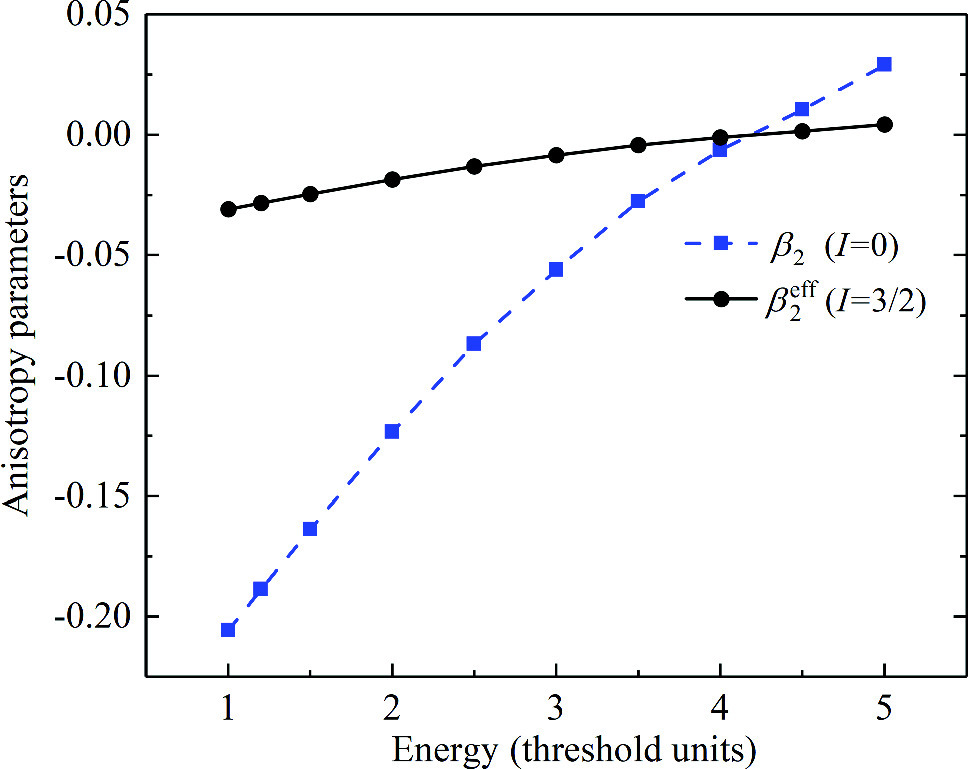https://doi.org/10.1140/epjd/s10053-025-01029-3
Regular Article - Atomic and Molecular Collisions
Angular anisotropy of the Lyman- line following electron-impact excitation of H-like gold ions with nuclear spin I = 3/2
line following electron-impact excitation of H-like gold ions with nuclear spin I = 3/2
Key Laboratory of Atomic and Molecular Physics & Functional Materials of Gansu Province, College of Physics and Electronic Engineering, Northwest Normal University, 730070, Lanzhou, People’s Republic of China
Received:
29
April
2025
Accepted:
19
June
2025
Published online:
7
July
2025
Electron-impact excitation from the ground state to the  level of H-like
level of H-like  Au
Au ions with nuclear spin
ions with nuclear spin  and the subsequent Lyman-
and the subsequent Lyman- radiative decay are studied using the multiconfigurational Dirac–Hartree–Fock method and the relativistic distorted-wave theory. Special attention is paid to the hyperfine-induced effects on angular anisotropy of the Lyman-
radiative decay are studied using the multiconfigurational Dirac–Hartree–Fock method and the relativistic distorted-wave theory. Special attention is paid to the hyperfine-induced effects on angular anisotropy of the Lyman- line. To this aim, the partial cross sections for excitations to the magnetic substates of the
line. To this aim, the partial cross sections for excitations to the magnetic substates of the  level are calculated, from which the alignment parameters of the
level are calculated, from which the alignment parameters of the  level and the corresponding hyperfine levels as well as the effective anisotropy parameter and the angular distribution of the Lyman-
level and the corresponding hyperfine levels as well as the effective anisotropy parameter and the angular distribution of the Lyman- line are obtained. It is found that the hyperfine interaction significantly weakens the anisotropy of the Lyman-
line are obtained. It is found that the hyperfine interaction significantly weakens the anisotropy of the Lyman- line, especially at low impact electron energies near the excitation threshold, when compared to the case of
line, especially at low impact electron energies near the excitation threshold, when compared to the case of  , the specific behavior of which exhibits a strong sensitivity to the impact energy. The present finding reveals the importance of including the hyperfine interaction in the relevant theoretical models and also provides a new perspective for explaining deviations between theoretical calculation and experimental measurement. Moreover, accurate angular anisotropy measurements of the Lyman-
, the specific behavior of which exhibits a strong sensitivity to the impact energy. The present finding reveals the importance of including the hyperfine interaction in the relevant theoretical models and also provides a new perspective for explaining deviations between theoretical calculation and experimental measurement. Moreover, accurate angular anisotropy measurements of the Lyman- line are suggested as a tool to explore the hyperfine interaction in highly charged few-electron ions.
line are suggested as a tool to explore the hyperfine interaction in highly charged few-electron ions.
Copyright comment Springer Nature or its licensor (e.g. a society or other partner) holds exclusive rights to this article under a publishing agreement with the author(s) or other rightsholder(s); author self-archiving of the accepted manuscript version of this article is solely governed by the terms of such publishing agreement and applicable law.
© The Author(s), under exclusive licence to EDP Sciences, SIF and Springer-Verlag GmbH Germany, part of Springer Nature 2025
Springer Nature or its licensor (e.g. a society or other partner) holds exclusive rights to this article under a publishing agreement with the author(s) or other rightsholder(s); author self-archiving of the accepted manuscript version of this article is solely governed by the terms of such publishing agreement and applicable law.





